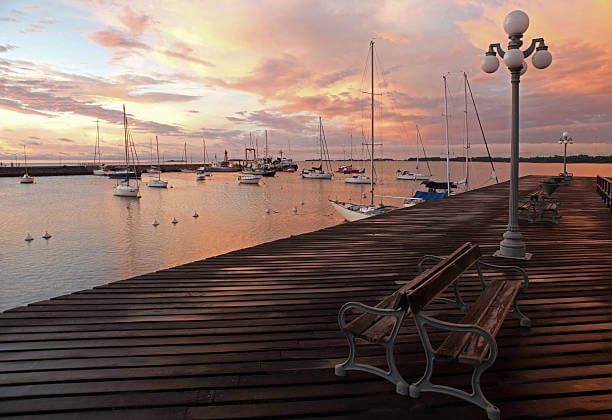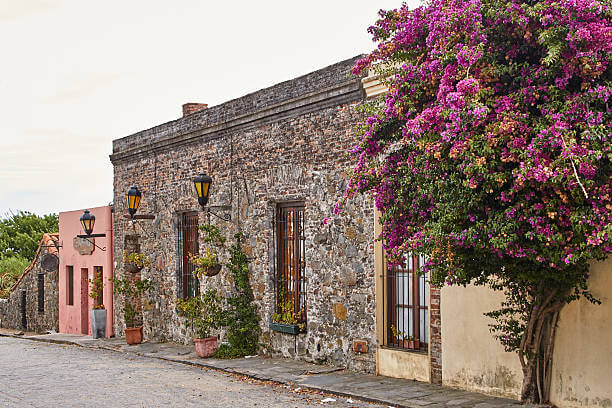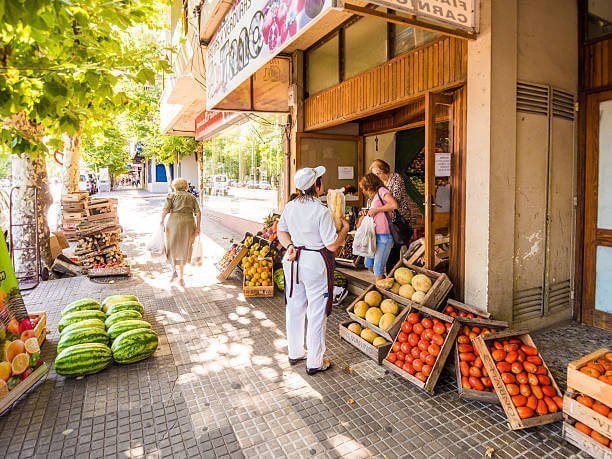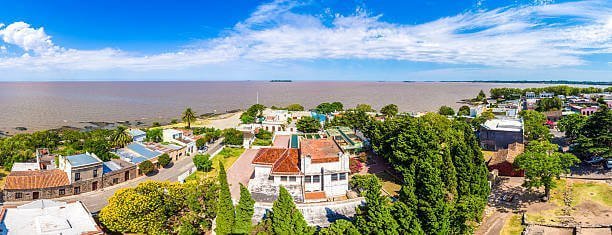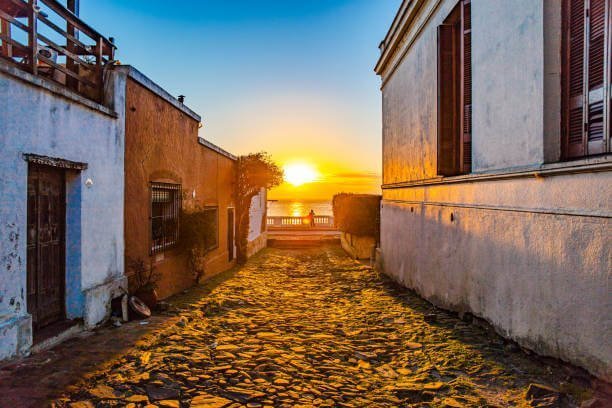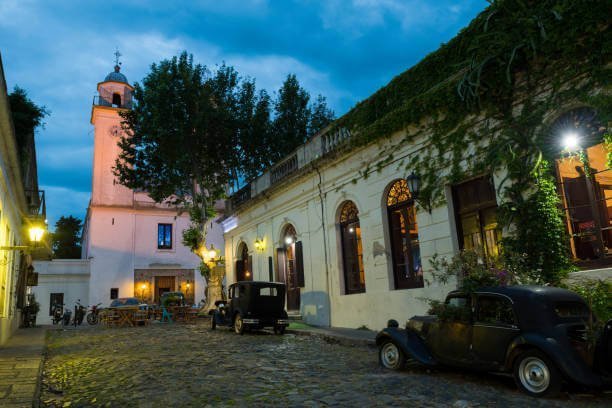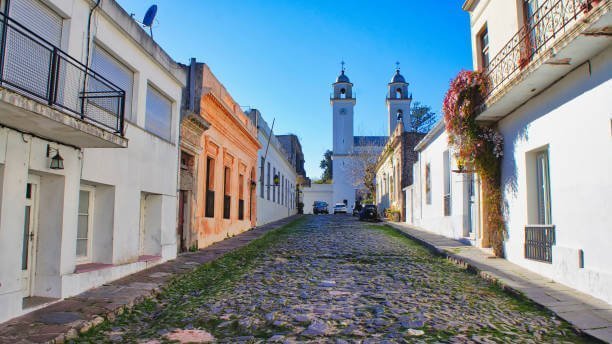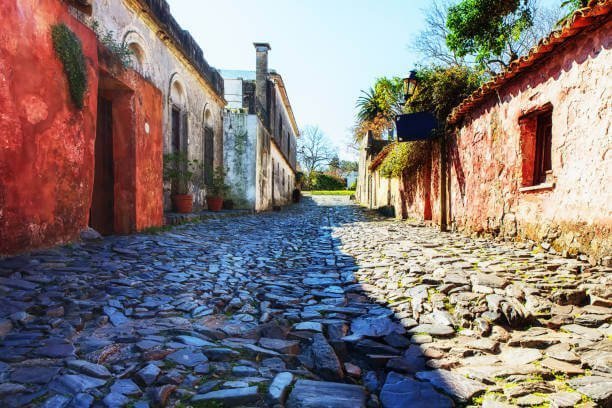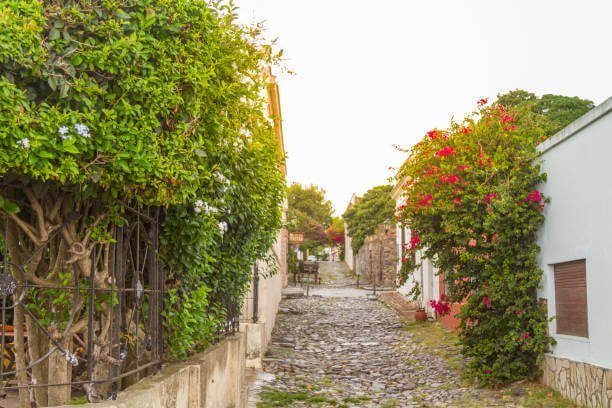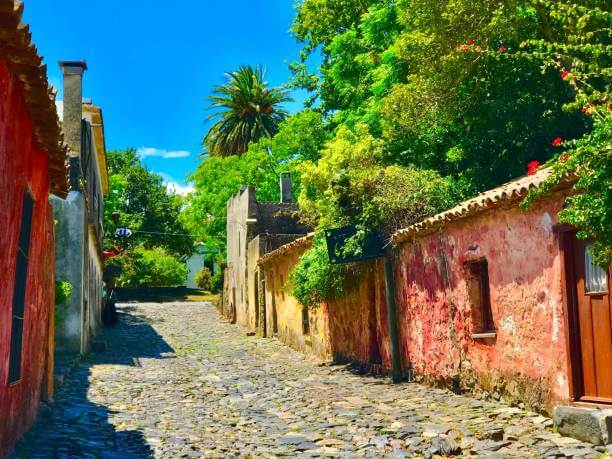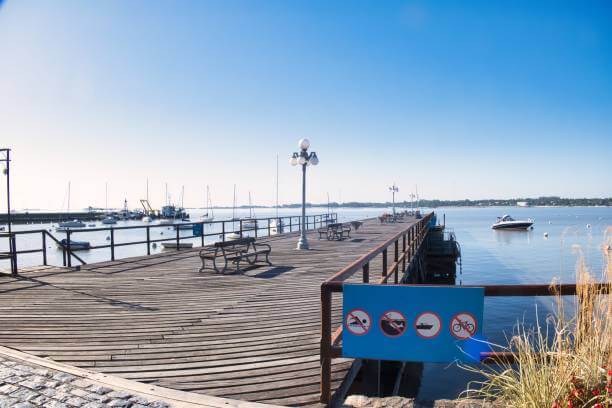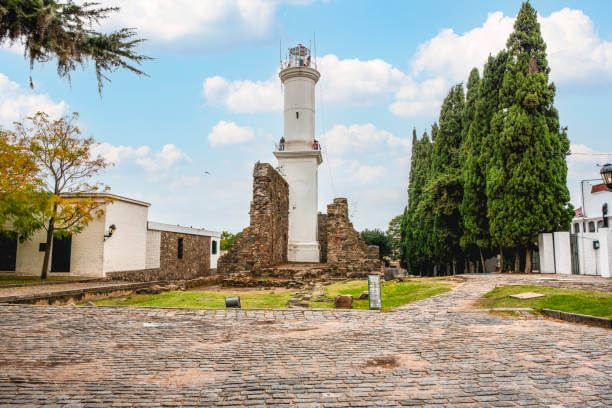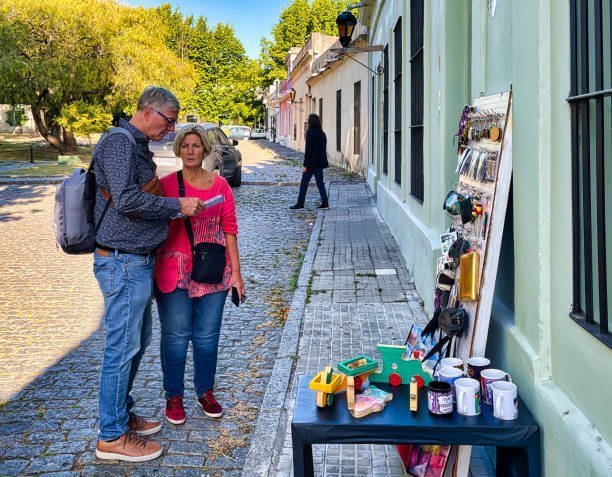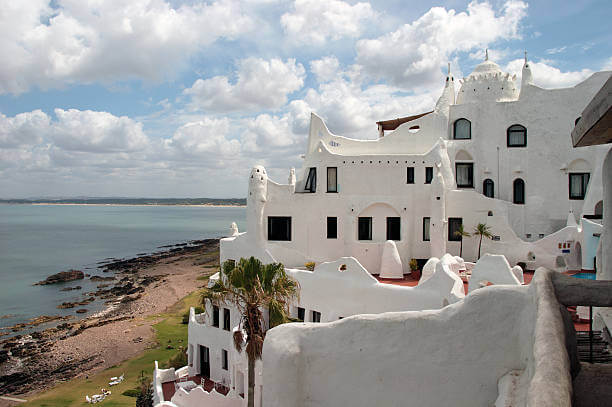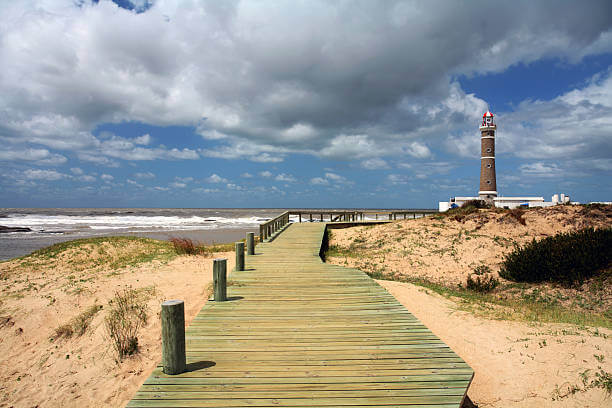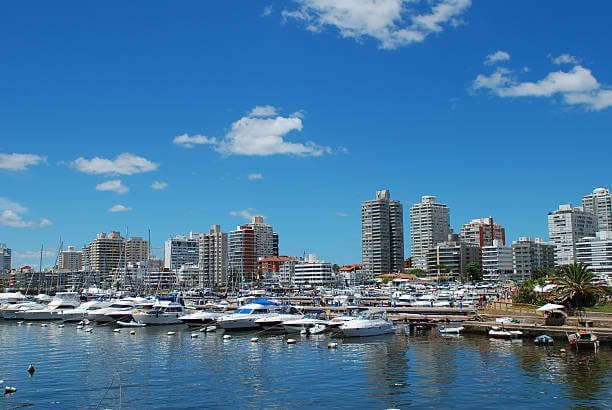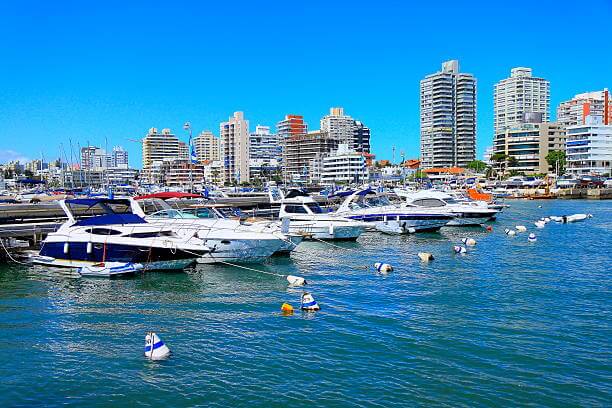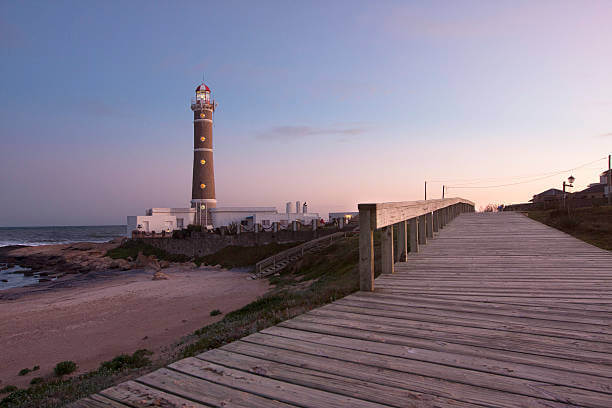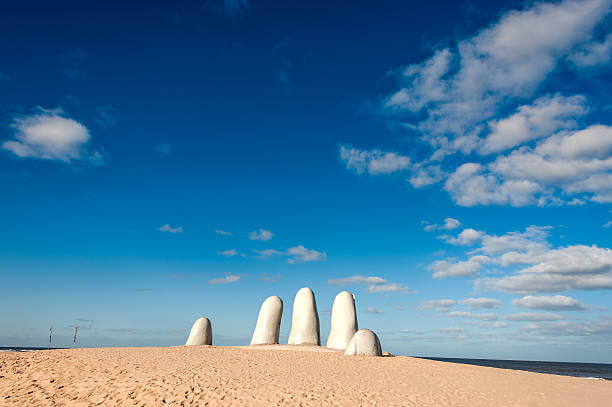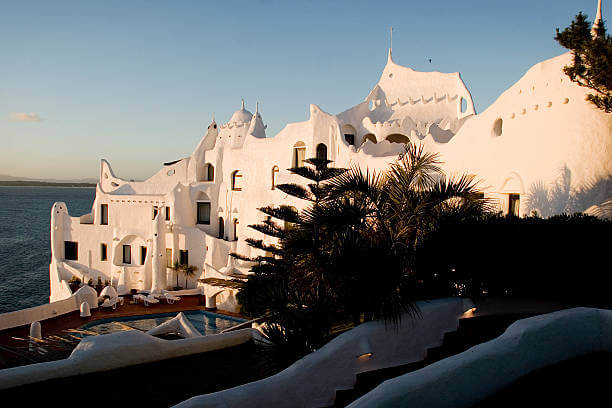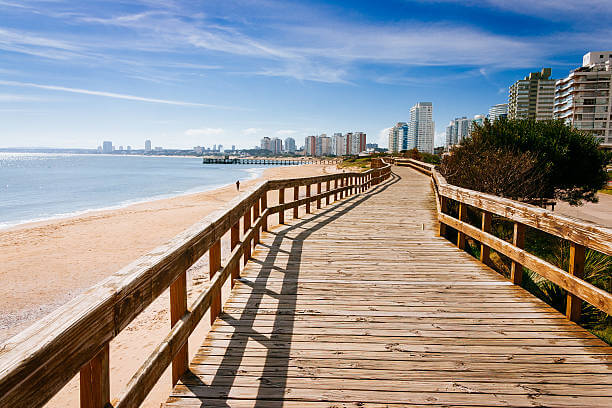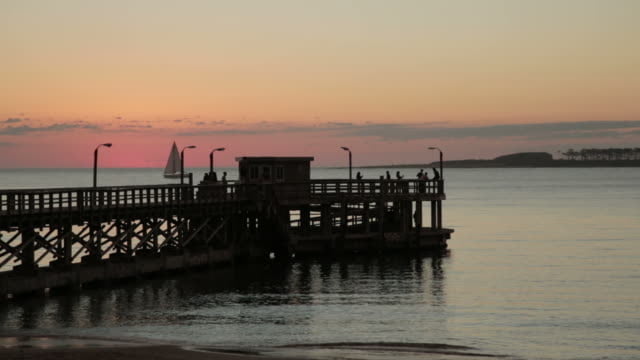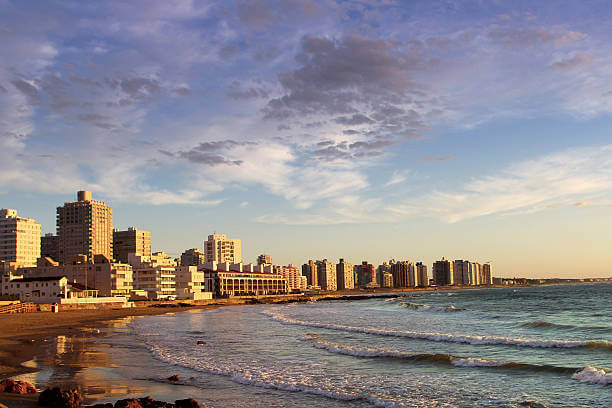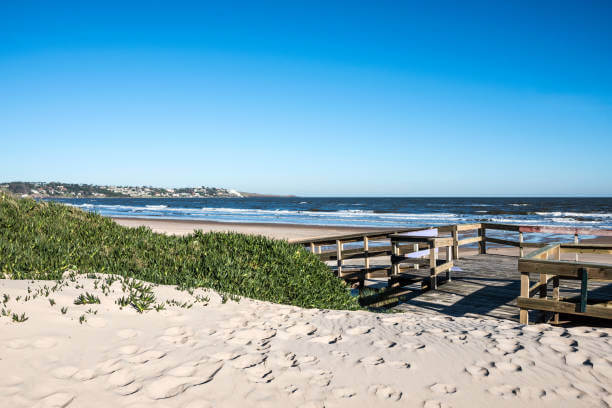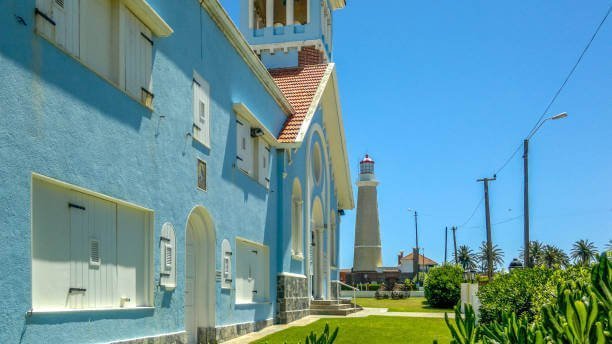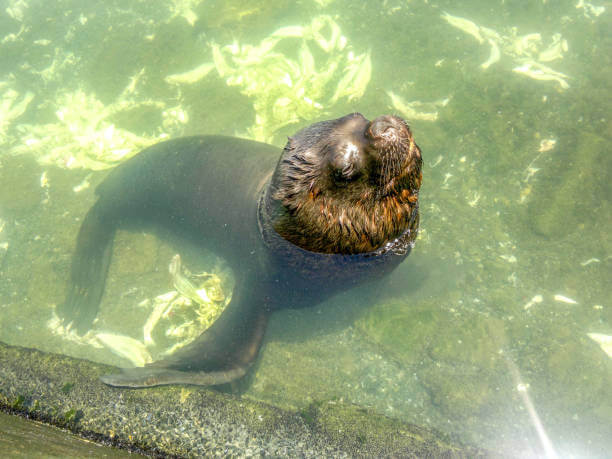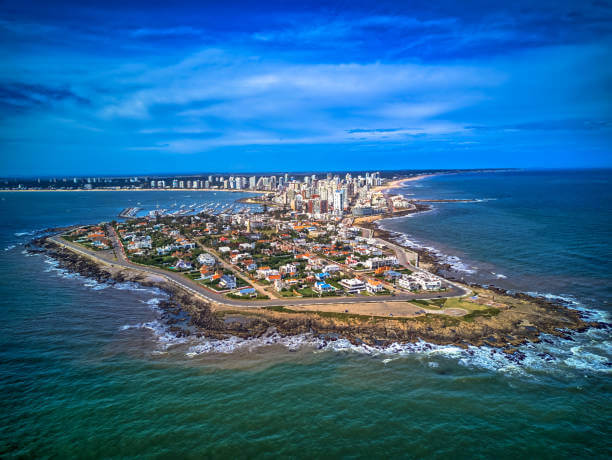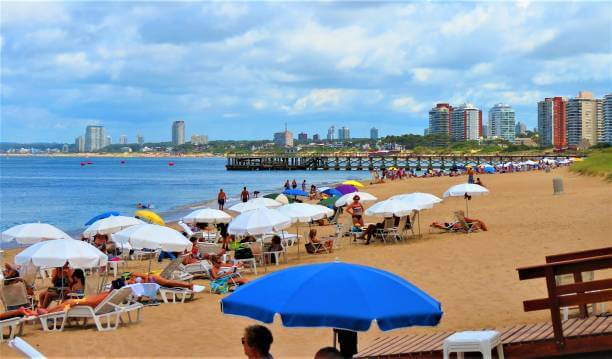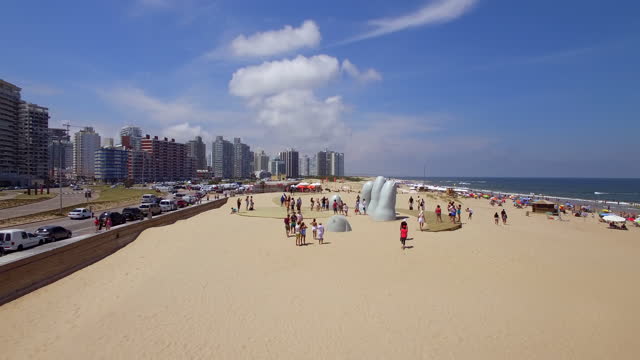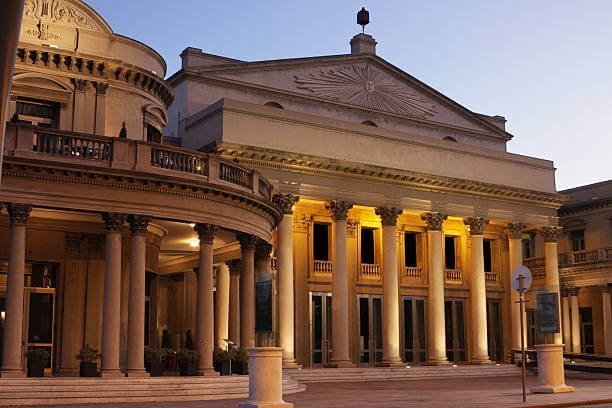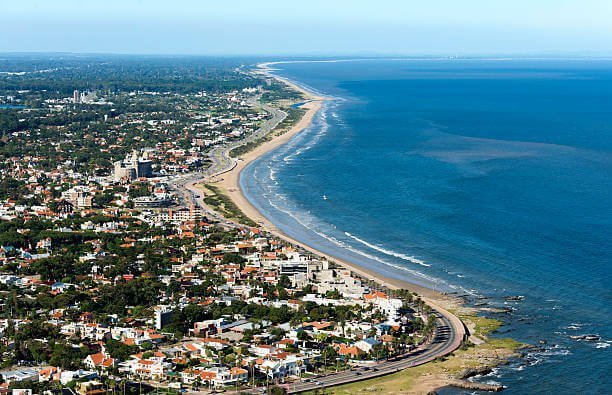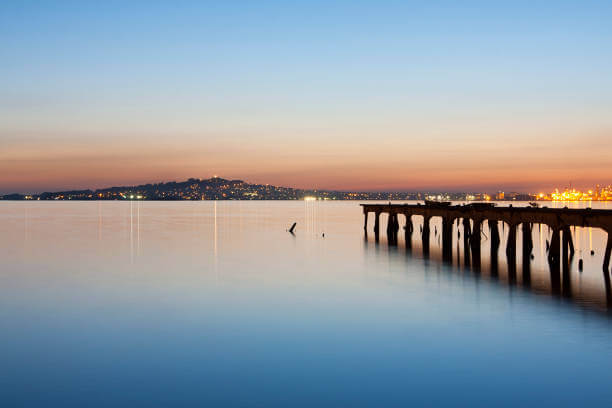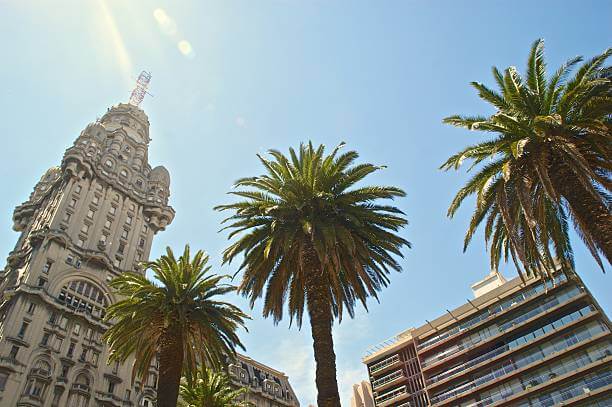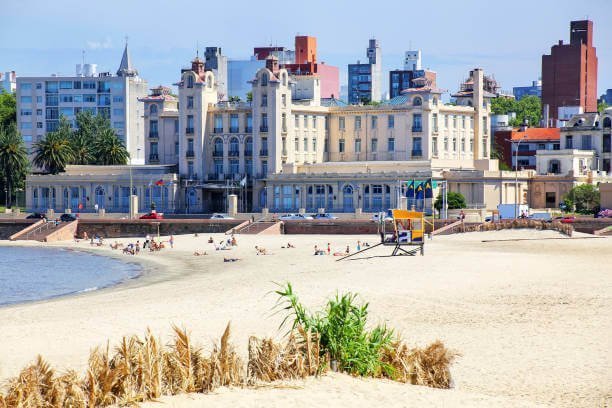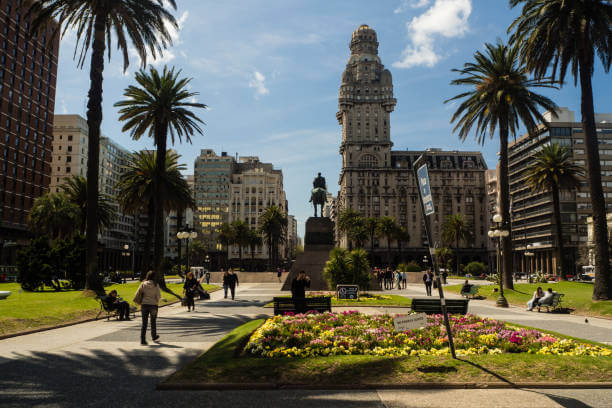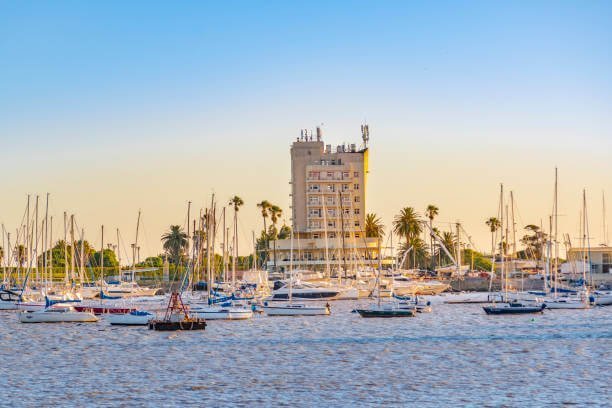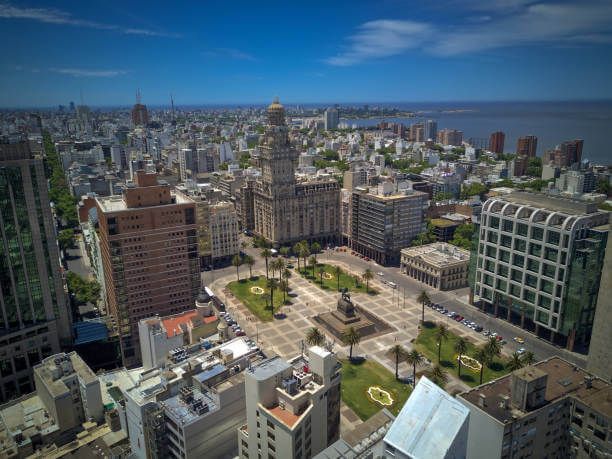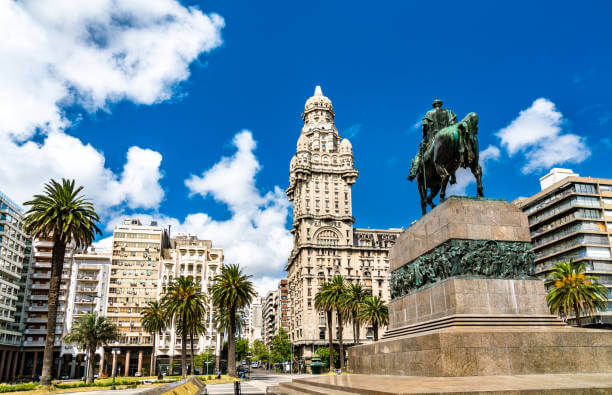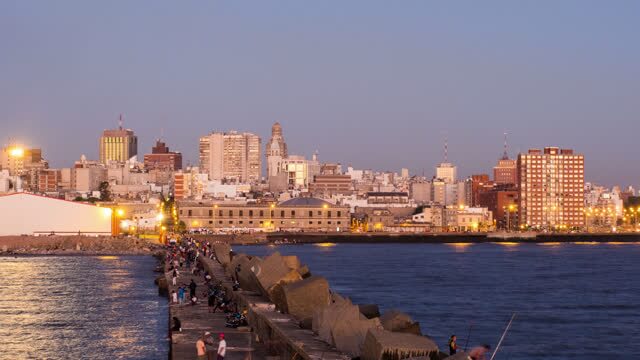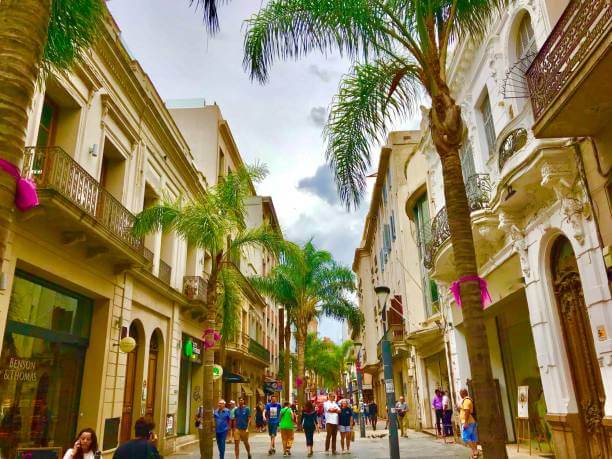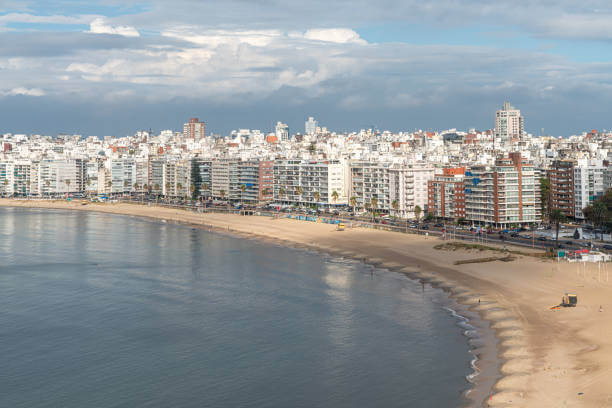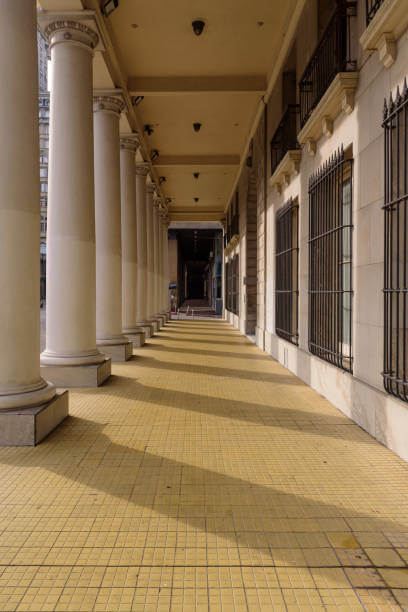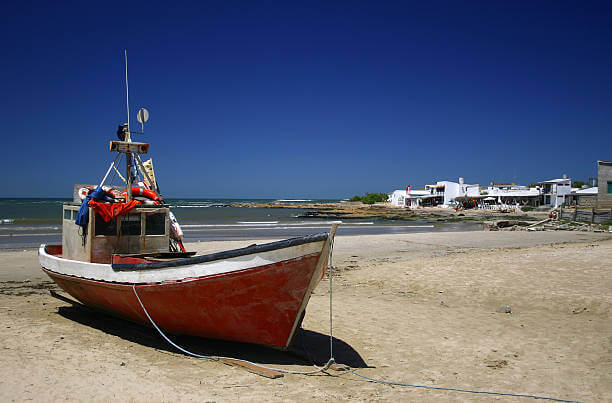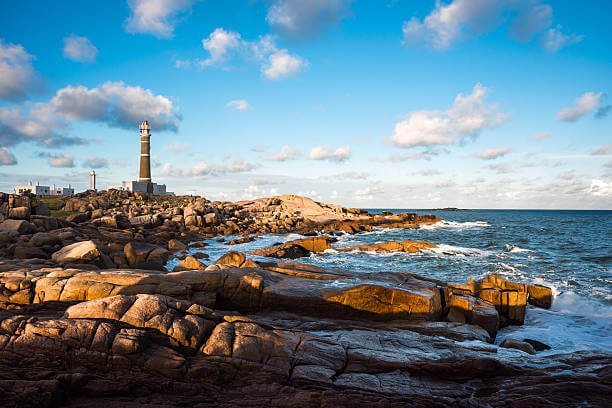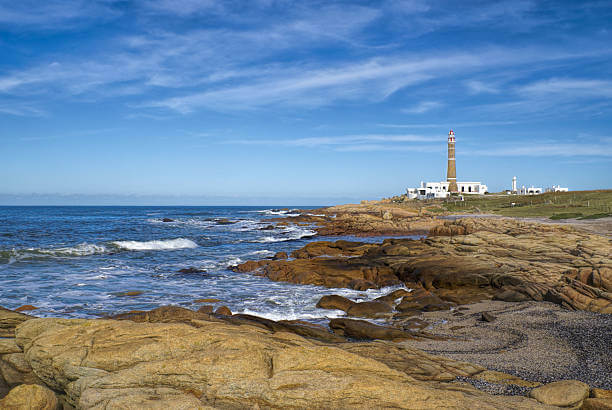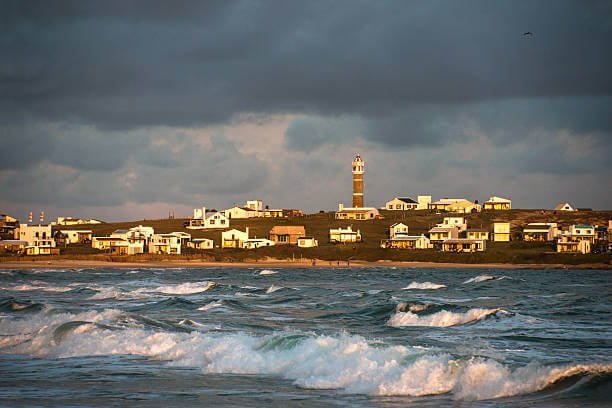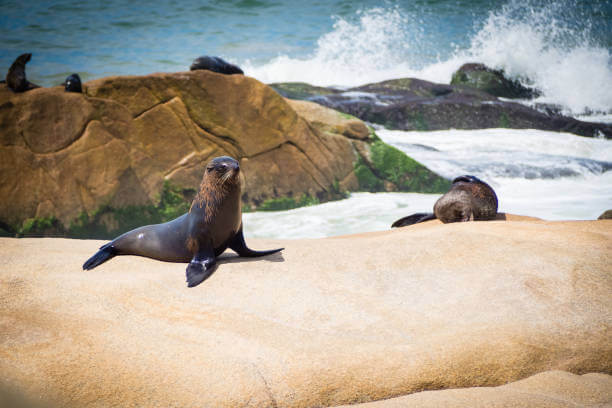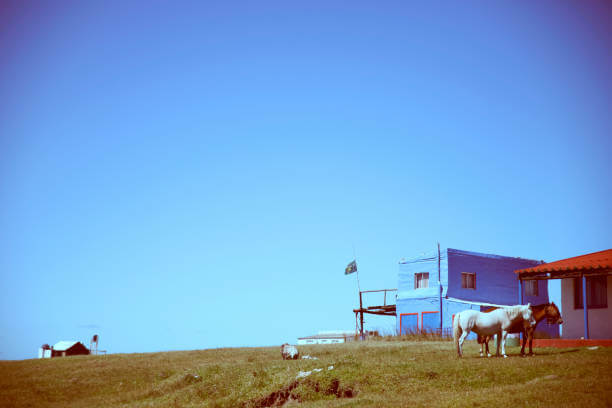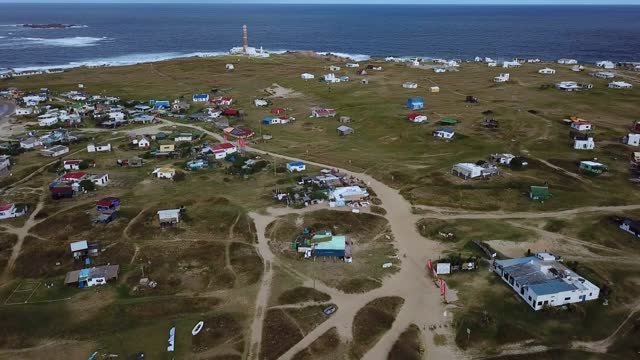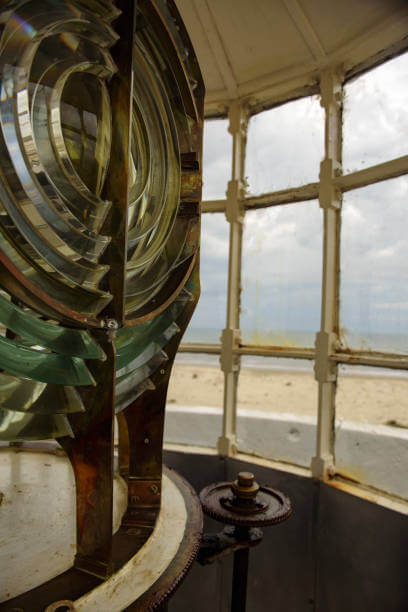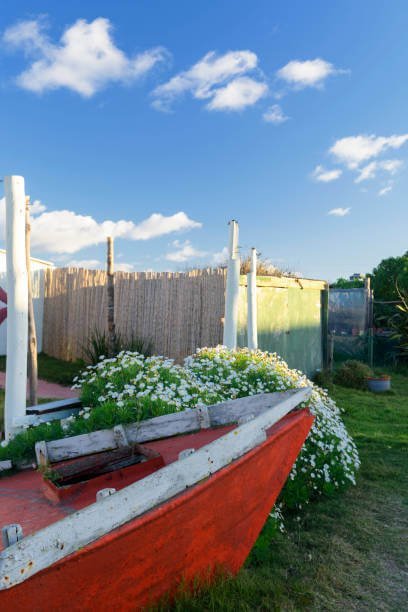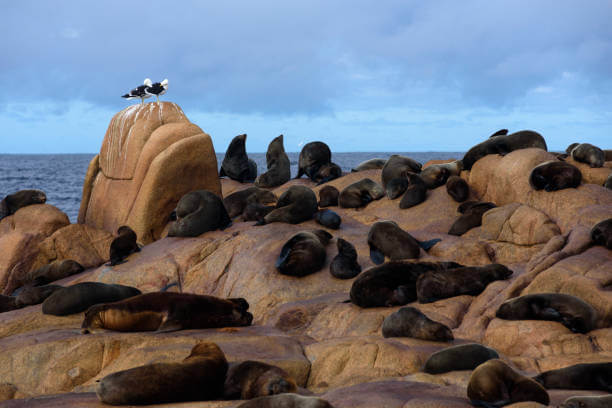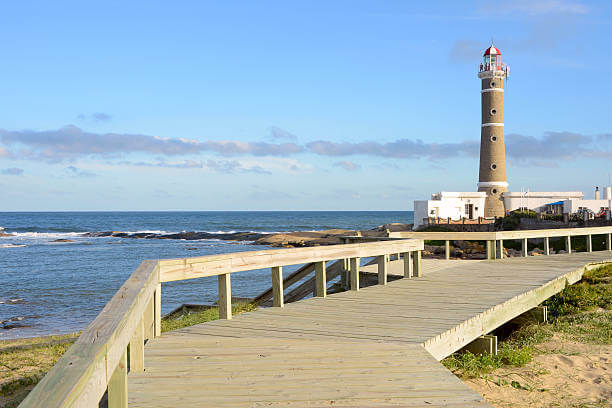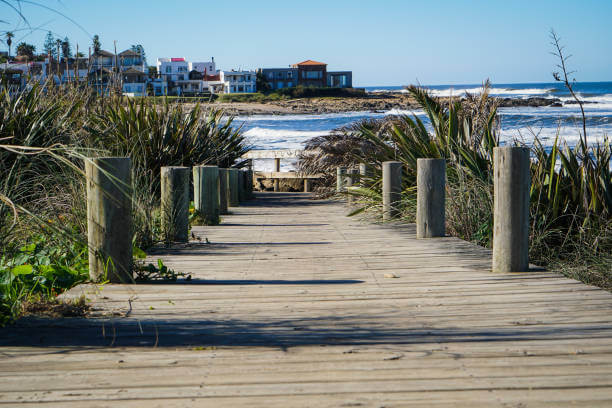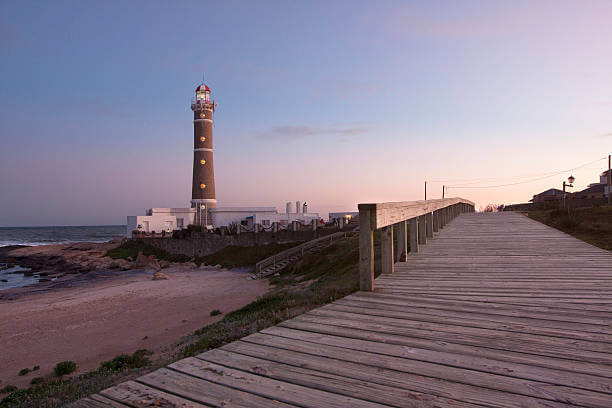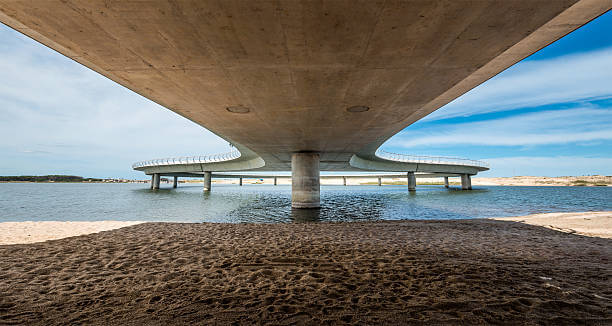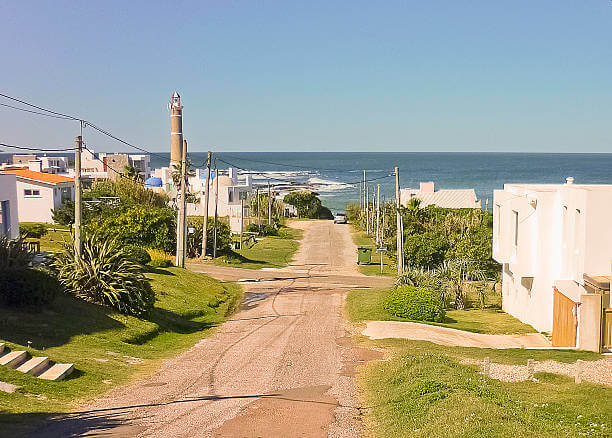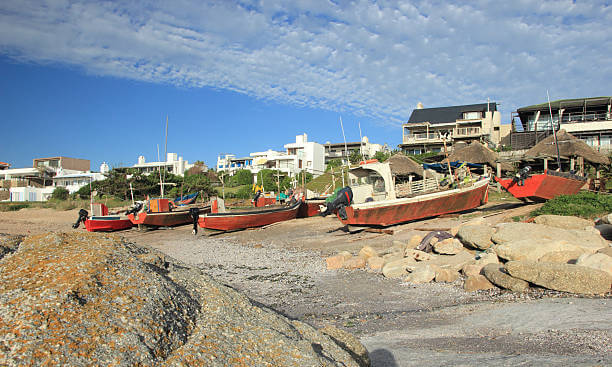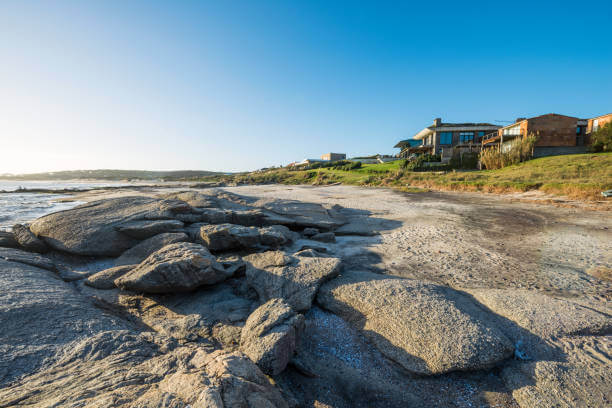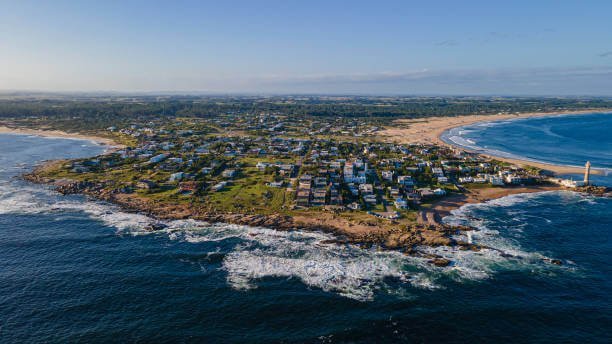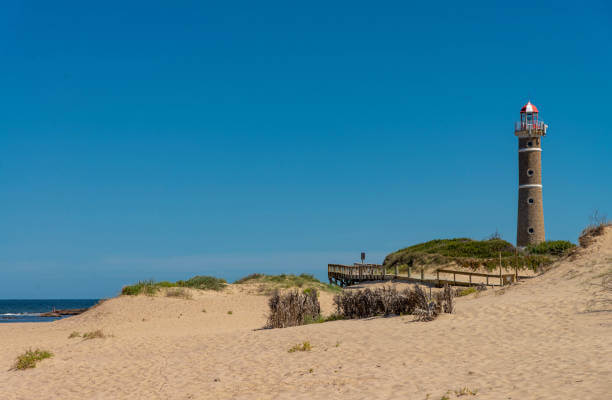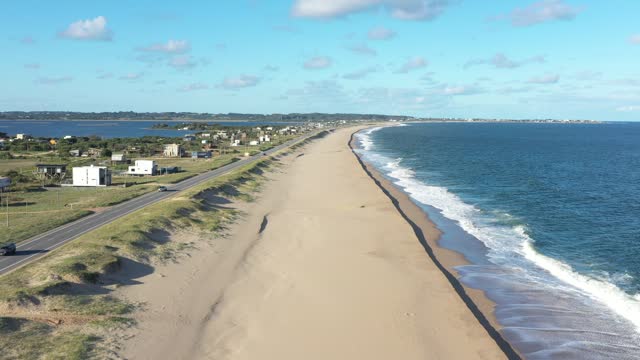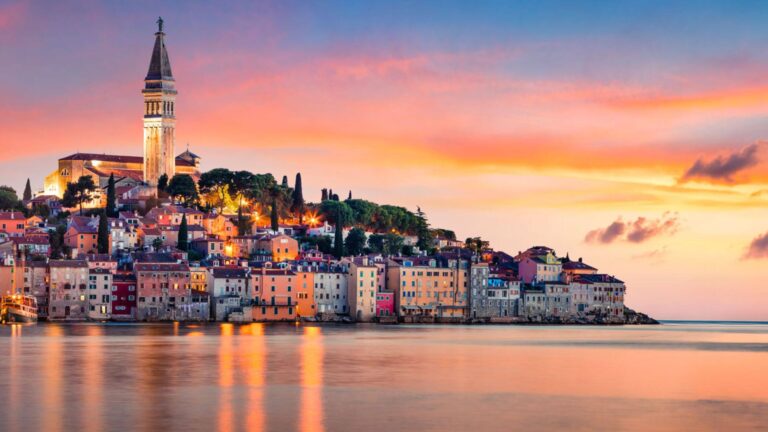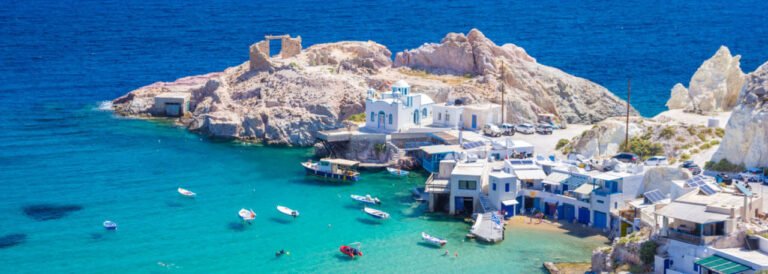Our Top 5 Best Places to Visit in Uruguay:
Uruguay: Exploring the Top 5 Destinations Beyond Expectations

Uruguay, a country often overlooked by travelers, pleasantly surprised us with its rich cultural heritage, stunning coastlines, and charming towns. As we explored this hidden gem, we uncovered the five best places that made our journey truly unforgettable. Join us as we share our personal experiences, hidden gems, and delightful dining discoveries in Uruguay.
Map of Uruguay and Bordering Countries:

Map Showing Uruguay Location in South America:

Countries Bordering Uruguay:
Uruguay is located on the southeastern coast of South America. bordered to the west by Argentina, on the north and northeast by Brazil, and on the southeast by the Atlantic Ocean, which makes up Uruguay’s coast.
Uruguay is approximately 181,034 square kilometers (69,898 sq mi) and in 2023 has a population of around 3.5 million people, of whom nearly 2 million live in the metropolitan area of its capital and largest city, Montevideo.
Our Top 5 Best Places to Visit in Uruguay:
1. Colonia del Sacramento – Timeless Beauty:
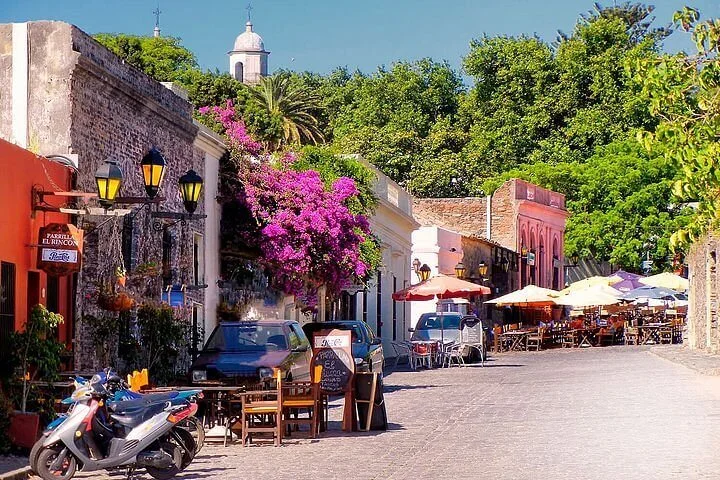

Unique Experience: Stepping into Colonia’s historic district felt like a journey back in time. Cobblestone streets, well-preserved colonial architecture, and picturesque plazas create an enchanting atmosphere. We spent hours wandering the labyrinthine alleys, admiring the pastel-colored houses and the lighthouse, which offers a breathtaking view of the Rio de la Plata.
Little Gem: For breakfast, we stumbled upon “Café Emporium,” a charming spot tucked away on a quiet street. Their freshly baked pastries and rich Uruguayan coffee made for a perfect start to our day.
2. Punta del Este – Beachside Bliss:
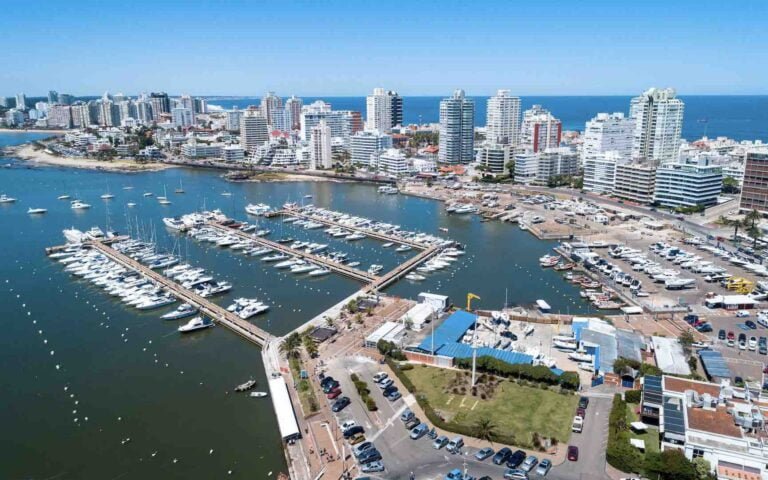

Unique Experience: Punta del Este, often called the “Monaco of South America,” exceeded our expectations. Playa Brava’s iconic “La Mano” sculpture rising from the sands left us in awe. We indulged in beachside picnics, watched surfers ride the waves at Playa Montoya, and admired the luxurious yachts in the marina.
Little Gem: Our favorite sundowner spot was “La Huella,” a beachfront restaurant known for its seafood and cocktails. Sipping a caipirinha while watching the sun dip below the horizon was the perfect way to end our beach days.
3. Montevideo – A Blend of History and Modernity:


Unique Experience: Montevideo, the capital, surprised us with its diverse neighborhoods. We explored the Old Town’s colonial charm, visited the bustling Port Market, and witnessed the vibrant street art in the Palermo district. The Rambla, a coastal promenade, provided stunning views of the city’s skyline.
Little Gem: Our mornings in Montevideo often started at “Café Brasilero,” a historic café that’s been serving coffee since 1877. The ambiance and freshly brewed cortado made it a favorite spot for breakfast.
4. Cabo Polonio – Nature’s Sanctuary:


Unique Experience: Cabo Polonio, an off-grid coastal village, was an adventure in itself. Accessible only by 4×4 vehicles, it lacks electricity and paved roads. Our stay in a rustic cabin immersed us in the serene beauty of nature. We explored pristine beaches, watched sea lions at the Cabo Polonio Lighthouse, and gazed at the starry night sky, unspoiled by city lights.
Little Gem: For a memorable breakfast, we visited “El Calabrese,” a charming café with wooden interiors that perfectly complemented the village’s rustic vibe. Their homemade pastries and strong coffee were a delight.
5. Jose Ignacio – Seaside Serenity:

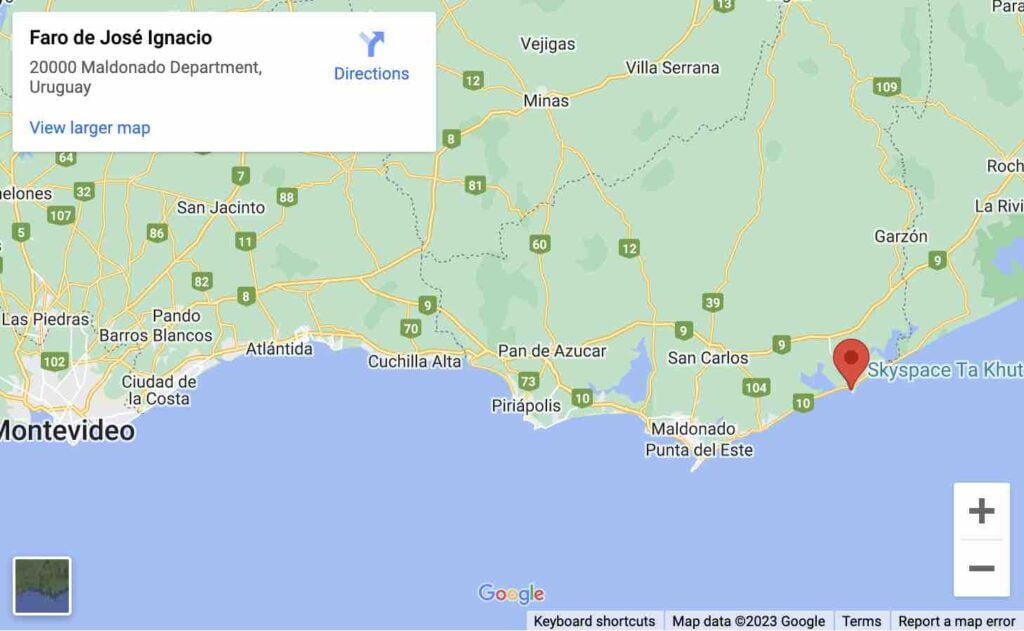
Unique Experience: Our journey led us to Jose Ignacio, a tranquil seaside village known for its pristine beaches and upscale charm. We spent our days lounging on Playa Brava and Playa Mansa, enjoying fresh seafood at beachfront restaurants, and admiring the town’s bohemian chic atmosphere.
Little Gem: “La Linda” was our go-to spot for coffee and pastries. Its cozy outdoor seating and ocean views provided the ideal setting for a leisurely morning.
Did we mention the food? EAT!

Uruguay’s culinary scene is a delightful fusion of flavors influenced by its European heritage and the richness of its natural resources. One cannot explore this charming country without indulging in its culinary treasures.
A centerpiece of Uruguayan cuisine is the “asado,” a traditional barbecue that goes beyond food; it’s a social and cultural event. Juicy cuts of beef, sausages, and ribs are expertly grilled over an open flame, and the result is a carnivore’s paradise.
To complement the meat, Uruguay offers a selection of delectable sides, such as “papas al plomo” (potatoes cooked in their skins with olive oil and herbs) and “ensalada rusa” (a potato and vegetable salad with mayonnaise). Empanadas, savory pastry pockets filled with various ingredients, are a beloved snack, while “milanesa,” a breaded and fried meat cutlet, satisfies both comfort food cravings and hearty appetites.
Don’t forget to pair your meal with a glass of “Tannat,” Uruguay’s signature red wine, known for its bold flavor and robust character. Uruguayan cuisine is not just a meal; it’s an invitation to savor the country’s heritage and the warmth of its people.

Essential Things to Know Before Traveling to Uruguay:
Before traveling to Uruguay, it’s important to be well-informed about various aspects of the country to ensure a smooth and enjoyable trip. Here are some essential things to know before your visit:
1. Visa and Entry Requirements:
- Check Uruguay’s visa requirements for your nationality. Many travelers from Western countries can enter Uruguay for tourism purposes without a visa for up to 90 days within a 180-day period. Ensure your passport has at least six months of validity beyond your planned departure date.
2. Currency:
- The currency in Uruguay is the Uruguayan Peso (UYU). Credit cards are widely accepted in major cities and tourist areas. ATMs are also readily available for cash withdrawals.
3. Language:
- The official language in Uruguay is Spanish. While many Uruguayans in tourist areas and cities speak some English, it’s helpful to know basic Spanish phrases to enhance your travel experience.
4. Safety:
- Uruguay is generally considered safe for travelers. However, exercise common-sense precautions, such as safeguarding your belongings, especially in crowded areas. Be aware of your surroundings and follow local advice regarding safety.
5. Health Precautions:
- Ensure your routine vaccinations are up to date. Depending on your travel plans, consider vaccinations for hepatitis A, hepatitis B, and tetanus. It’s also wise to have travel insurance covering medical emergencies.
6. Water Quality:
- Tap water in Uruguay is generally safe to drink in most places. However, if you have a sensitive stomach or are unsure about the water quality, it’s advisable to drink bottled water.
7. Local Customs and Etiquette:
- Uruguayans are generally polite and welcoming. It’s customary to greet people with a handshake or a kiss on the cheek. Dress is typically casual, but in upscale restaurants, a more formal dress code may be expected.
8. Transportation:
- Uruguay has a well-developed transportation network, including buses, taxis, and rental cars. The country’s compact size makes it easy to get around. In Montevideo and some other cities, there are public bike-sharing programs.
9. Weather and Packing:
- Uruguay experiences four distinct seasons. Summers (December to February) are warm and the most popular time for tourists, while winters (June to August) can be mild but cooler. Pack accordingly and check the weather forecast for your travel dates.
10. Electrical Outlets:
– Uruguay uses Type C and Type L electrical outlets. If your devices have a different plug type, consider bringing a universal adapter.
11. Time Zone:
– Uruguay is in the Uruguay Standard Time Zone (UYT), which is UTC-3.
12. Local Cuisine:
– Be sure to try traditional Uruguayan dishes like “asado” (barbecue), “milanesa” (breaded and fried meat cutlets), and “mate” (a traditional herbal tea). Empanadas and seafood are also popular.
13. Internet and Communication:
– Uruguay has good internet connectivity in cities and towns. Consider purchasing a local SIM card with data for convenient communication and internet access during your trip.
14. Currency Exchange:
– Use reputable currency exchange offices or banks to exchange money. Be cautious when exchanging money on the street, as unofficial vendors may offer unfavorable rates.
15. Emergency Contact Information:
– Save important contact information, including the contact details of your country’s embassy or consulate in Uruguay, local emergency numbers, and your travel insurance information.
By keeping these essential factors in mind, you can prepare for a safe and enjoyable trip to Uruguay and fully immerse yourself in the country’s culture, cuisine, and natural beauty.
How to Get to Uruguay:
Getting to Uruguay is relatively straightforward, with international airports, ferry services, and land borders connecting the country to its neighbors. Here are the primary ways to get to Uruguay:
1. By Air:
- Carrasco International Airport (MVD): Located just outside the capital, Montevideo, Carrasco International Airport is the largest and busiest airport in Uruguay. It offers numerous international flights, making it a common entry point for travelers. You can find direct flights to Carrasco International Airport from major cities in South America, Europe, and North America.
- Capitán Corbeta CA Curbelo International Airport (PDP): This airport serves the Punta del Este region and offers seasonal international flights, particularly during the summer months when Punta del Este is a popular beach destination. (also known by its former official name of Laguna del Sauce International Airport, and as Punta del Este International Airport)
2. By Sea:
- If you’re in Argentina, you can take a ferry from Buenos Aires to Colonia del Sacramento, a historic town in Uruguay. The ferry ride across the Rio de la Plata offers scenic views and takes approximately one hour. There are several ferry companies providing this service.
3. By Land:
- Uruguay shares land borders with Argentina and Brazil. If you’re traveling overland from these neighboring countries, you can cross the border by bus or car. Ensure you have the necessary visas and documentation for your specific entry point.
4. Cruises:
- Some cruise lines include stops in Uruguay, often at Montevideo or Punta del Este, as part of their itineraries. Check with cruise operators for specific details and availability.
5. Overland from Paraguay:
- While less common, it’s also possible to enter Uruguay by road from Paraguay, crossing the border at the Paso de los Libres-Uruguaiana bridge. Ensure you have the necessary documentation and check visa requirements.
Visa Requirements:
- Verify Uruguay’s visa requirements for your nationality before traveling. Many travelers, particularly from Western countries, can enter Uruguay for tourism purposes without a visa for up to 90 days within a 180-day period. Visa regulations can change, so check the latest requirements before your trip.
Gov & Health Considerations:
- Uruguay may have specific entry requirements and health protocols for travelers. Check the latest travel advisories and health guidelines before planning your trip.
Before traveling to Uruguay, consider your preferred entry point, visa requirements, and the most convenient transportation option based on your location. Booking flights or ferry tickets in advance can help ensure a smooth arrival in this beautiful South American destination.
How to Get Around Uruguay:
Getting around Uruguay is relatively straightforward, thanks to its well-developed transportation infrastructure. Whether you’re exploring cities, coastal towns, or the countryside, you have several transportation options at your disposal:
1. Buses:
- Buses are the most common mode of transportation for both short and long distances in Uruguay. The country has an extensive bus network that connects major cities, towns, and rural areas. Buses are comfortable, affordable, and a popular choice for both locals and tourists. Companies like COT, Copsa, and Turil provide intercity bus services.
2. Taxis:
- Taxis are readily available in most cities and towns, making them a convenient way to get around, especially for short distances or when public transportation is limited. In urban areas, taxis are metered, but it’s a good idea to confirm the fare with the driver before starting your journey.
3. Rental Cars:
- Renting a car is an option if you prefer flexibility and plan to explore remote or less touristy areas. Major car rental companies have offices at airports and in larger cities. Be prepared for variable road conditions, traffic, and local driving habits. An international driving permit may be required.
4. Ride-Sharing Apps:
- Ride-sharing apps like Uber operate in some cities in Uruguay, offering a convenient and reliable way to get around. These apps are particularly useful in Montevideo.
5. Trains:
- While Uruguay does have a limited train network, it’s primarily used for freight transportation rather than passenger travel. For intercity travel, buses are the more common and efficient choice.
6. Domestic Flights:
- Domestic flights are available for longer-distance travel within Uruguay, but they are less common due to the country’s small size. It’s often more economical to use buses or taxis for shorter distances.
7. Ferries:
- Ferries operate between Montevideo and nearby destinations like Colonia del Sacramento and Buenos Aires, Argentina. These are popular routes for both tourists and locals.
8. Cycling:
- In cities like Montevideo and Punta del Este, you can rent bicycles to explore urban areas. Uruguay has dedicated bike lanes in some cities, making it a cyclist-friendly option.
9. Walking:
- Exploring cities and towns on foot is a pleasant way to soak in the local culture and see the sights, especially in historic city centers.
10. Horseback Riding:
– In rural areas and some coastal regions, horseback riding is a unique and enjoyable way to explore the countryside.
11. Shared Vans (Combi or Minivan):
– Shared vans, known as “combi” or “minivan,” are another mode of transportation between cities and towns. These are often used for shorter routes where bus services are less frequent.
12. Boats and Ferries:
– In coastal areas and along rivers, you can find boat and ferry services for transportation and exploration. For example, you can take a boat ride in the Laguna Garzón area.
Navigating Uruguay is relatively easy, whether you’re exploring its charming cities, coastal resorts, or the serene countryside. Public transportation is reliable, and options like buses and taxis are widely available. Choose the mode of transportation that best suits your travel itinerary and preferences to make the most of your Uruguayan adventure.
FAQ – Our Top 5 Best Places to Visit in Uruguay and Traveling to Uruguay in General
Traveling to Uruguay: Frequently Asked Questions
1. Do I need a visa to visit Uruguay?
- Most travelers from Western countries, including the United States and the European Union, can enter Uruguay for tourism purposes without a visa for up to 90 days within a 180-day period. However, visa requirements can vary by nationality, so check the latest requirements before your trip.
2. What is the best time to visit Uruguay?
- The best time to visit Uruguay depends on your preferences. Summer (December to February) is ideal for beachgoers and outdoor activities, while spring and autumn offer milder weather with fewer crowds. Winter (June to August) is suitable for exploring cities and cultural attractions.
3. Is Uruguay a safe destination for tourists?
- Uruguay is generally considered a safe destination for tourists. It has a low crime rate compared to many other countries in the region. However, like in any destination, it’s advisable to take basic safety precautions, especially in crowded areas and tourist hotspots.
4. What vaccinations do I need before traveling to Uruguay?
- There are no specific vaccinations required for entry into Uruguay. Ensure your routine vaccinations are up to date. Depending on your travel plans, consider vaccinations for hepatitis A, hepatitis B, tetanus, and others. Consult your healthcare provider for personalized recommendations.
5. Can I drink tap water in Uruguay?
- In most parts of Uruguay, tap water is safe to drink. However, if you are unsure or have a sensitive stomach, you can opt for bottled water, which is widely available and affordable.
6. What currency is used in Uruguay, and how do I access money?
- The currency in Uruguay is the Uruguayan Peso (UYU). You can exchange money at banks or exchange offices, and credit cards are widely accepted in major cities and tourist areas. ATMs are also readily available.
7. What is the official language of Uruguay?
- The official language of Uruguay is Spanish. While many Uruguayans in tourist areas and cities speak some English, it’s helpful to know basic Spanish phrases to enhance your travel experience.
8. How can I get around Uruguay?
- Uruguay has a well-developed transportation network, including buses, taxis, rental cars, and ride-sharing apps. Buses are the primary mode of transportation for both short and long distances. Domestic flights and ferries are available for longer-distance travel.
9. What are some popular tourist destinations in Uruguay?
- Popular destinations in Uruguay include Montevideo (the capital), Punta del Este, Colonia del Sacramento, Cabo Polonio, and Jose Ignacio. Each offers a unique blend of culture, history, and natural beauty.
10. Are there any cultural customs or etiquette I should be aware of in Uruguay?
– Uruguayans are generally polite and welcoming. Greet people with a handshake or a kiss on the cheek. Dress is typically casual, but in upscale restaurants, a more formal dress code may be expected. Tipping is customary in restaurants (typically around 10% of the bill).
11. Is it safe to swim in the ocean in Uruguay?
– Uruguay’s coastal waters are generally safe for swimming, but it’s essential to be aware of local conditions, such as strong currents and tides. Pay attention to warning signs and flags at the beaches.
12. What should I pack for a trip to Uruguay?
– Pack according to the season of your visit. Include essentials like comfortable clothing, sunscreen, a hat, and insect repellent if you plan to spend time outdoors. If you plan to explore rural areas, sturdy footwear is recommended.
13. Is Uruguay a cash-based society, or are credit cards widely accepted?
– Credit cards are widely accepted in major cities and tourist areas. However, having some cash on hand for smaller purchases and in more remote areas is advisable.
14. Are there any specific travel health requirements for Uruguay?
– Uruguay may have specific entry requirements and health protocols for travelers. Check the latest travel advisories and health guidelines before planning your trip.
Before traveling to Uruguay, consider these frequently asked questions to prepare for your journey, and check with relevant authorities for the most up-to-date information on visa requirements, health regulations, and travel advisories. Uruguay offers a warm and welcoming travel experience with its rich culture, stunning landscapes, and friendly locals.
Best Places to Visit in Uruguay: Frequently Asked Questions
Frequently Asked Questions (FAQ) About Places to Visit in Uruguay:
1. What are the top cities to visit in Uruguay?
- The top cities to visit in Uruguay include Montevideo (the capital), Punta del Este, Colonia del Sacramento, Piriápolis, and Carmelo. Each city offers a unique blend of culture, history, and attractions.
2. Is Montevideo worth visiting, and what are the must-see attractions in the capital?
- Yes, Montevideo is definitely worth a visit. Must-see attractions in Montevideo include the Ciudad Vieja (Old Town), Rambla promenade, Mercado de la Abundancia, and historic landmarks like Independence Square and Solis Theatre.
3. What makes Punta del Este a popular destination, and what are its main attractions?
- Punta del Este is known for its glamorous beaches, vibrant nightlife, and upscale resorts. Some of its main attractions include Playa Brava, Playa Mansa, La Mano sculpture, and the Punta del Este Lighthouse.
4. Why is Colonia del Sacramento a UNESCO World Heritage Site, and what can I see there?
- Colonia del Sacramento is a UNESCO World Heritage Site due to its well-preserved colonial architecture. Visitors can explore the historic district, visit the lighthouse, and stroll along the charming cobblestone streets.
5. What are the natural attractions in Uruguay, and where can I find them?
- Uruguay offers several natural attractions, including beautiful beaches along its coastline, the serene countryside with estancias (ranches), the lush greenery of the Sierra de Minas, and the unique landscapes of Cabo Polonio and Santa Teresa National Park.
6. Is Cabo Polonio accessible, and what makes it a unique destination?
- Cabo Polonio is accessible by 4×4 vehicles or designated shuttles. It’s a unique destination due to its off-grid, rustic charm, lack of electricity, pristine beaches, and beautiful sand dunes.
7. What are some lesser-known places to visit in Uruguay off the beaten path?
- Off the beaten path, you can explore towns like Rocha, La Pedrera, and Punta del Diablo for a quieter beach experience. Additionally, the region around Tacuarembó offers gaucho culture and horseback riding opportunities.
8. Are there any islands or coastal destinations worth visiting in Uruguay?
- Yes, you can explore Gorriti Island and Isla de Lobos, which are known for their natural beauty and wildlife. The latter is home to a large sea lion colony.
9. What are some cultural experiences to have in Uruguay?
- Enjoy traditional Uruguayan culture by attending local festivals, sipping mate (herbal tea), indulging in Uruguayan barbecue (asado), and listening to traditional music, such as candombe and murga.
10. Are there opportunities for outdoor activities and sports in Uruguay?
– Uruguay offers various outdoor activities, including horseback riding, hiking, surfing, kiteboarding, and fishing. The country’s diverse landscapes make it an ideal destination for outdoor enthusiasts.
11. How can I explore the wine culture in Uruguay, and where are the wine regions located?
– To explore Uruguay’s wine culture, visit wine regions like Canelones, Maldonado, and Colonia. You can tour wineries, taste Tannat (Uruguay’s signature red wine), and enjoy vineyard views.
12. What are some unique festivals and events to attend in Uruguay?
– Unique festivals include Carnival (February-March), the Tango Festival in Montevideo, and the International Jazz Festival in Punta del Este. These events showcase Uruguay’s rich cultural heritage.
13. Is Uruguay a safe destination for tourists?
– Uruguay is generally considered a safe destination for tourists. However, it’s advisable to take basic safety precautions, especially in crowded areas and tourist hotspots.
Uruguay offers a diverse range of attractions and experiences for travelers, from its charming cities and historic sites to its beautiful beaches and natural wonders. Whether you’re seeking cultural immersion, outdoor adventures, or relaxation, Uruguay has something to offer every type of traveler.
You want more on Places to visit in Uruguay? ⬇️ ⬇️ ⬇️
Our Top 5 Best Places to Visit in Uruguay – Final Thoughts:
Uruguay surprised us at every turn, offering a rich tapestry of experiences. From the timeless beauty of Colonia to the beachside bliss of Punta del Este, the vibrant culture of Montevideo, the natural sanctuary of Cabo Polonio, and the seaside serenity of Jose Ignacio, this underrated country is a treasure trove of hidden gems waiting to be uncovered. Our journey through Uruguay was a testament to the unexpected wonders that can be found when you explore beyond the beaten path.

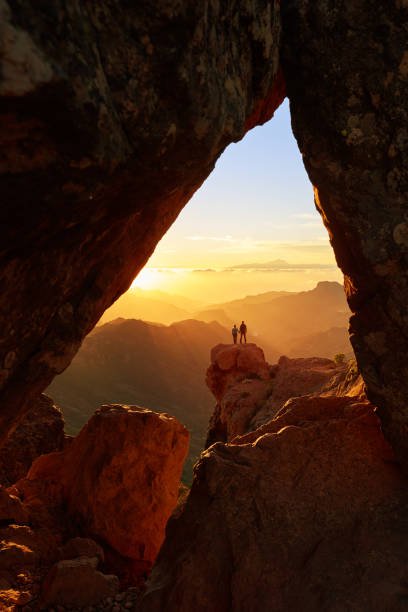
Best Places to Visit in Spain 2023
Spain, a country rich in history, culture, and breathtaking landscapes, beckons travelers with its vibrant cities, stunning beaches, and captivating architecture. From the enchanting streets of Barcelona to the sun-kissed shores of the Costa del Sol, Spain offers a diverse array of destinations to explore..

Europe: A Tapestry of Diversity, Culture and Adventure
Europe, a continent as diverse as it is beautiful, is a traveler’s dream come true. From the snow-capped peaks of the Alps to the sun-kissed beaches of the Mediterranean, Europe offers an enchanting mix of experiences for every type of traveler. Join us as we embark on a journey through the heart of Europe, discovering…

Our Top 5 Best Places to Visit in Kuwait
Discovering Kuwait: Journey Through its Hidden Treasures Hey fellow wanderlusters, let’s dive into Kuwait’s kaleidoscope of culture, where the past meets modernity. I’ve uncovered five must-visit spots for the young and adventurous traveler. From sipping on sweet tea under Bedouin tents to catching epic sunsets, Kuwait is an adventure waiting to happen. Map of Kuwait…

Our Top 5 Best Places to Visit in Dominica
Dominica: Where Adventure Meets Paradise Welcome to Dominica, the “Nature Island” of the Caribbean. If you’re seeking a destination that’s off the beaten path, brimming with natural wonders and adventure, you’ve found it. Here, you’ll explore lush rainforests, soak in rejuvenating hot springs, and dive into sparkling turquoise waters. Let’s embark on a journey to…

Our Top 5 Best Places to Visit in Jordan
My Journey Through Jordan’s Top 5 Destinations If you’re ready to dive into a world of ancient wonders, surreal landscapes, and incredible experiences, then Jordan is calling your name. Let me take you on a ride through my unforgettable journey as I uncovered the 5 best places to visit in this captivating country. Map of…

Our Top 5 Best Places to Visit in Lebanon
Lebanon Unveiled: Exploring the Mystique of the Middle East Welcome to the captivating land of Lebanon! Nestled along the Mediterranean Sea, this enchanting country is a treasure trove of history, culture, and natural beauty. Let’s embark on a journey to discover some of the most mesmerizing places that Lebanon has to offer. Map of Lebanon…
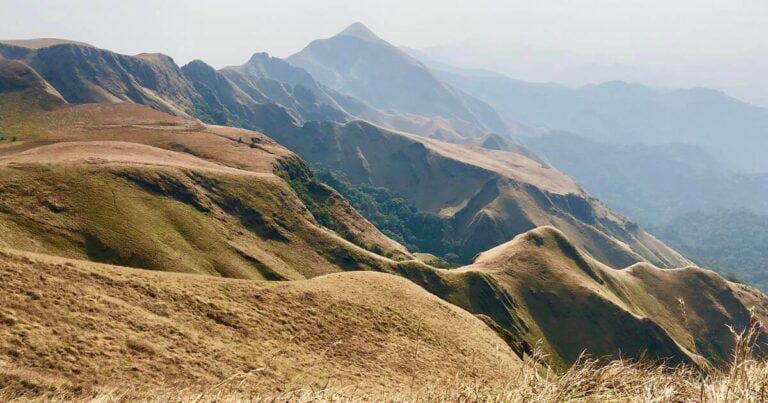
Our Top 5 Best Places to Visit in Guinea
Unveiling Guinea’s Hidden Treasures: 5 Must-Visit Places Are you ready for an off-the-beaten-path adventure in West Africa? Guinea, a hidden gem nestled between Guinea-Bissau, Senegal, Mali, Cote d’Ivoire, Liberia, and Sierra Leone, awaits your discovery. Prepare to be captivated by its vibrant culture, stunning landscapes, and welcoming people as we explore some of the must-visit…
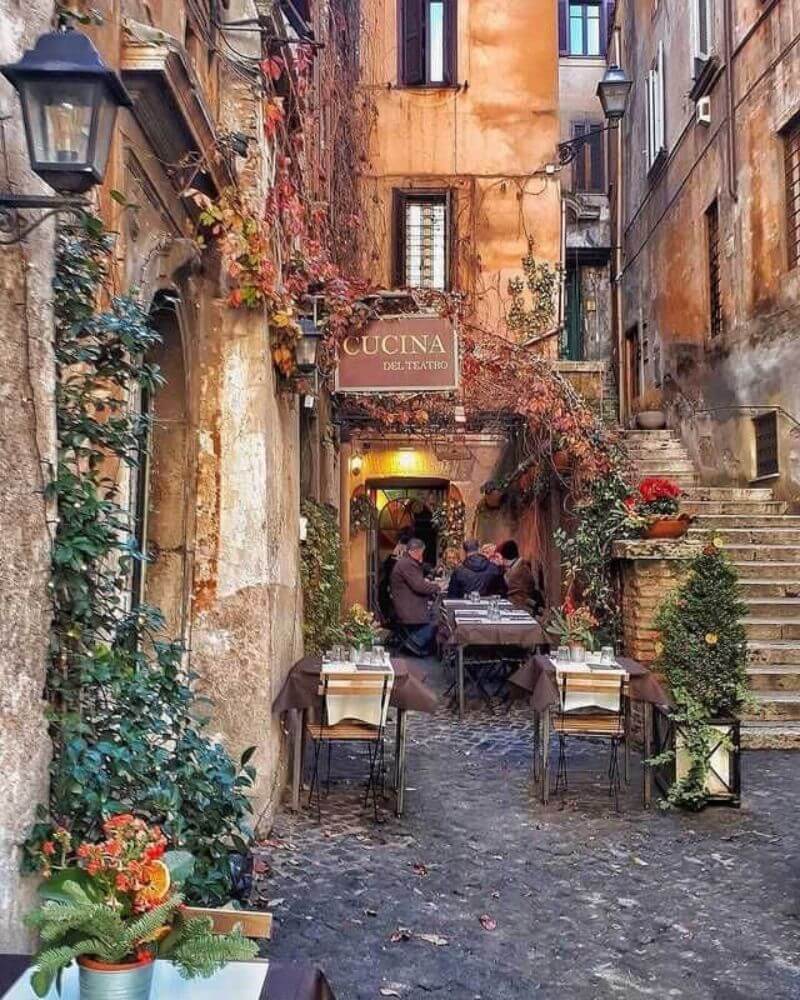
Best Places to Visit in Italy 2023
Italy, a land of romance, rich history, and breathtaking landscapes, beckons travelers with its magnetic allure. From the captivating cities adorned with timeless architecture to the picturesque coastal towns and rolling vineyards, this Mediterranean gem offers a plethora of unforgettable experiences..
Exploring Greece’s Timeless Treasures: Greece Best Places to Visit Top 10
Exploring Italy’s Treasures: The Best Places to Visit in Italy in 2023
Our 10 Best Places to Visit in Venice: Come Explore the Enchanting Floating City
Unveiling the Enchanting Beauty: Our Best Places to Visit in Florence
Our Best Free Places to Visit in New York That are yes, Absolutely FREE!
Our Best 10 Affordable Vacation Destinations if you are on a tight budget.
Our 10 Best Budget Travel Tips: Explore the World Without Draining Your Bank Account.
These are our Top 10 Best Travel Destinations Worldwide 2023
Our Absolute Best list of 10 Less Touristy Places to Travel in Europe 2023
Australia: A Traveler’s Paradise: Best Australian Destinations 2023
Our Top 5 Best Places to Visit in Uruguay – By David John
5 Best Places to Visit in Uruguay: Cover Image Casapueblo by sat
Best Places to Visit in Uruguay: flickr images licensed under CC BY 2.0
Additional images: adobe · colourbox · istock · pexels · shutterstock · unsplash unless otherwise stated.
Were our Top 5 Best Places to Visit in Uruguay: helpful to you?
Let us know your thoughts in the comments below..
And if you are looking for a specific piece of information, please do comment below..


